Drones have become so ubiquitous in today’s society that it’s hard to believe that they were initially created for one purpose. These unmanned aircraft were originally created for war-time efforts. But, as the versatility of the drone was recognized, it became more widely utilized in other fields.
What was once a specialized system is now a critical technology for many industries, including agriculture, photography, logistics, and real estate. Paramilitary entities, such as law enforcement, still utilize unmanned aerial systems (UAS) in similar ways to their original purpose. For law enforcement, drones are commonly used to gather critical intelligence to help in decision-making. They can be used for search and rescue operations and surveillance. Most recently, companies are exploring the use of drones as a first responder, which would bring medical supplies and other resources to an active scene.
As the applications of UAS continue to grow, the playing field has been leveled. Leo McCloskey, vice president of marketing at Echodyne, said
The low cost and simple design of off-the-shelf drones, combined with significant operational capabilities, require police agencies to consider both the negative implications of drones when in the hands of criminal actors and the benefit of using drones as tools for law enforcement mission sets.1
What has become a safety concern is that these versatile systems are also being used for criminal reasons, which provides a case for counter-drone technology.
In the Sky
One reason why law enforcement agencies have started to rely so heavily on drones is their ability to gather intelligence and situational awareness before officers enter a scene. This results in less risk to officers’ lives, as well as an increased ability to clear a scene faster.
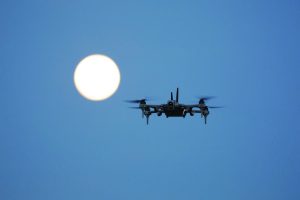
Teal Drones, a subsidiary of Red Cat Holdings, understands this need well and aims to help public safety agencies through the development of the Teal 2. Developed under guidelines to receive a Blue UAS certification from the U.S. Department of Defense, the Teal 2 is a compact drone that is mainly used for surveillance due to its high-resolution thermal imaging capability.
The Teal 2 has a flight time of up to 30 minutes and a range of up to 3.1 miles from the controller. The system comes with its own field repair kit, and because of its modularity, users can do a lot of maintenance on their own without needing to ship the drone back to the factory.
One differentiator of Teal Drones is that the company provides a vehicle for its robust tactical ecosystem that enables other capabilities through third-party software. “We know that we can’t do it all ourselves,” said vice president of marketing at Red Cat Holdings, Stan Nowak. “But we can make a great aircraft and make an ecosystem to allow other third-party apps to come through.”2
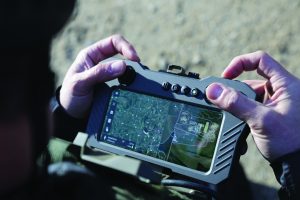
It is for this reason that Teal Drones partners with software companies, such as Reveal Technology, Immervision, and Doodle Labs. Each of these brings a new capability within the Teal 2’s tactical ecosystem. Tomohawk Robotics’ Kinesis software offers intuitive flight control of up to four vehicles from the Teal Air Control unit. Athena AI brings target recognition and weapon detection to the drone. But one of the main features of the Teal 2 is Teledyne FLIR’s Hadron 640R EO/IR sensor. Although the sensor has daylight capabilities, the Teal 2 is able to “dominate the night” with the high-resolution imaging system. Via the ground control station, a user can toggle through various palettes of thermal images to see which one provides the best clarity in the given situation.
The Teal 2 comes without subscription fees and with a two-day training program.
On the Sky
Although it comes with many positives, the widely used UAS has become a nuisance and threat to security in several cases. “In 2015, I saw drones interfere with California firefighters, crash-land in front of Angela Merkel, and end up in the stands of the U.S. Tennis Open,” said Linda Ziemba, founder and CEO of AeroDefense.3
Given her background in internet security and technology, Ziemba wanted to explore the use of internet security technologies on drones to enhance privacy, safety, and security. When she set out to launch a radio frequency–based drone detection technology, she realized that it may be a violation of several regulations. Pressing forward and learning more about the regulatory landscape, Ziemba refocused her product from a mitigation system to a system that has no mitigation capability to affect the flight of a drone (Federal Aviation Administration regulation), does not interfere with another’s radio network (Federal Communications Commission regulation), or demodulate and decode private communications (a U.S. Department of Justice regulation).
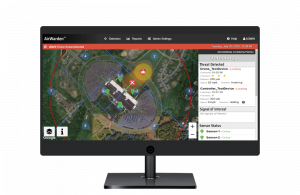
This technology is available as the AirWarden, which detects drones and pilots and alerts security teams to their location for proper response.
AeroDefense’s new product, the AirWarden Remote ID Receiver uses radio frequency technology to constantly monitor the airspace. It receives remote ID signals—mandated by the Federal Aviation Administration—from drones and controllers in real-time, which typically contain information such as device location and altitude. Once the AirWarden sensors receive the Remote ID broadcasts, the system sends a text, email, or an on-screen alert when the drone crosses a user-defined detection alert zone during live detection.
“Overall drone detection technology helps maintain a balance between the potential benefits of drone technology and the protection of public safety, privacy, and security concerns,” said Ziemba.
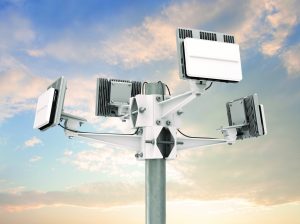
Drones offer great opportunities to law enforcement, but they also bring new challenges. “The opportunity is for drones to assist the service mission, and the challenge is to be able to detect, track, locate, and respond to nuisance and criminal drone activity,” said Leo McCloskey, vice president of marketing at Echodyne.4
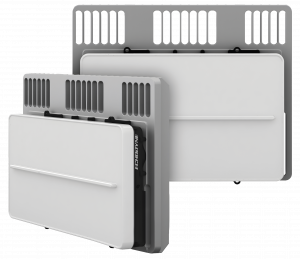
Echodyne designs and manufactures breakthrough technology that brings advanced, military-like radar performance to commercial markets. The team believes there are two primary applications of their radar technology for law enforcement professionals: (1) the use of radar for drone detection and mitigation purposes and (2) the use of radar for airspace deconfliction while operating drone missions.
Radar transmits a radio signal and receives the return signal. This process allows the radar to determine the size, location, orientation, and speed of several targets within the detection pane. Because the radar is emitting its own signal and receiving the return signal, it can also detect non-emitting or “silent” drones.
The manufacturer has reduced the complexity and cost of large military radar into a compact, solid-state format. With rapid setup and a simple user interface, Echodyne’s radar allows law enforcement to establish airspace situational awareness when dealing with nuisance and criminal drones.
Dedrone also offers a full spectrum of multi-sensor airspace security solutions. With a complete product suite for drone detection, tracking, and identification, Dedrone solutions can be deployed in several different methods.
The company’s City-Wide Drone Detection solution is one of the largest global networks of drone detection services. Designed to be easily accessible, once the login credentials are confirmed, a user can access the system on a phone or tablet or within an operating center.
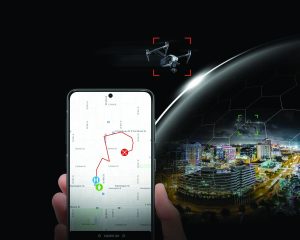
At the heart of each Dedrone solution is DedroneTracker, which is the company’s command and control platform for detection and mitigation. AI confirms drone presence and determines the location of the drone and its pilot by taking inputs from multiple sensors, including radio frequency, radar, video, and acoustics. The city-wide detection solution leverages existing infrastructure to monitor hundreds of drones and geographical areas at once. Users can easily mark alert zones and receive real-time notifications when a specific zone is breached. The user will be able to see drone and pilot information.
Conclusion
“Drone proliferation is happening so quickly that counter-drone technology must be implemented at the same pace to keep cities safe,” said Dedrone chief marketing officer, Mary-Lou Smulders.5
And with the conversations in Congress surrounding counter-drone capabilities being pushed toward state, local, and tribal authorities, police agencies should be aware of the technology that is available for the field.d
Notes:
1Leo McCloskey (vice president of marketing, Echodyne), email interview, July 6, 2023.
2Stan Nowak (vice president of marketing, Red Cat Holdings), telephone interview, July 5, 2023.
3Linda Ziemba (founding CEO, AeroDefense), email interview, June 21, 2023.
4McCloskey, email interview, July 6, 2023.
5Mary-Lou Smulders (CMO, Dedrone), email interview, June 19, 2023.
|
SOURCE LIST |
|
|
|
|
Please cite as
“Eyes in the Skies,” Product Feature, Police Chief 90, no. 8 (August 2023): 53–55.


